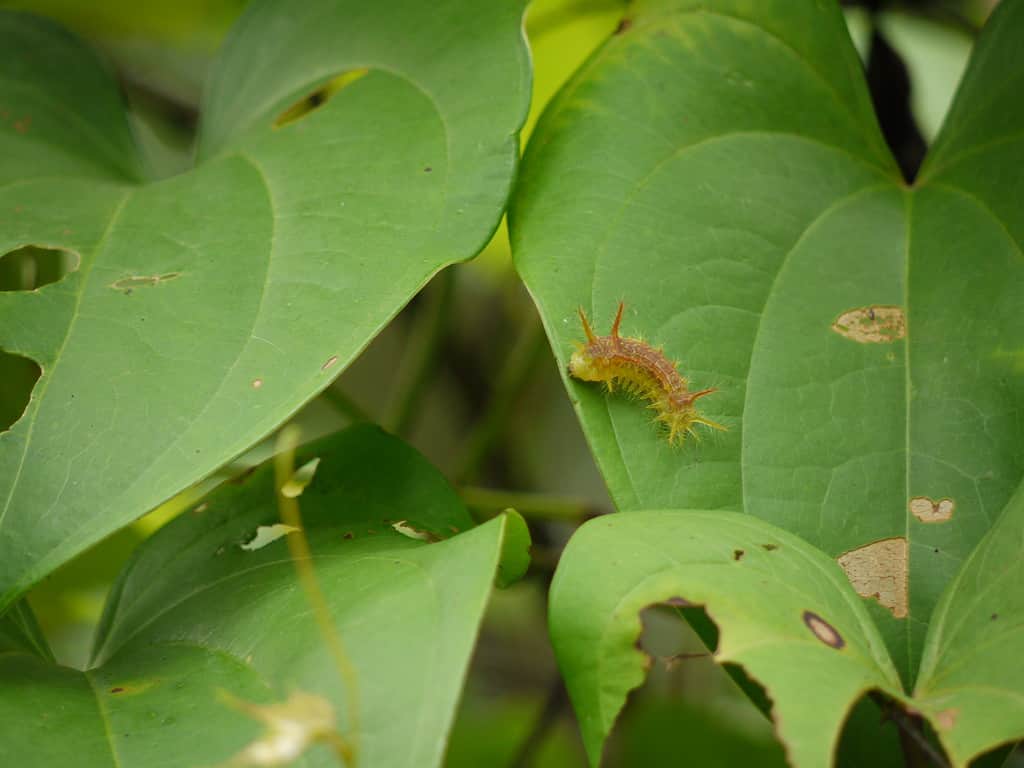Invasive species are nonnative plants and animals that pose a risk to human health, native species, and the economy. The Hawaii Invasive Species Council defines them as an “Alien species whose introduction does or is likely to cause economic or environmental harm or harm to human health.” These species are a dire threat to native Hawaiian plants, animals, and habitats. Discover 12 invasive species in Hawaii and learn why they are dangerous to the state.
Coqui Frogs

Coqui frogs are disruptive to the Hawaiian ecosystem and are an invasive species in Hawaii.
©Jeremy A. Casado/Shutterstock.com
The coqui frog is a rapid-response species in Hawaii, meaning it has high priority. These tiny tree frogs are slightly over an inch long and feature light yellow to dark brown coloring. They live on the ground, in trees, and in bushes, and their calls are very distinctive. While many enjoy hearing their nighttime calls, these frogs are disruptive to the environment. They spread in the 1980s after traveling on potted plants from Puerto Rico. And they populated the islands quickly, including the Big Island, Maui, and O’ahu. This species drowns out other animals during nighttime mating calls, making it difficult for native species to reproduce. Coqui frogs also eat many insects, further disrupting the ecosystem.
Kalij Pheasant
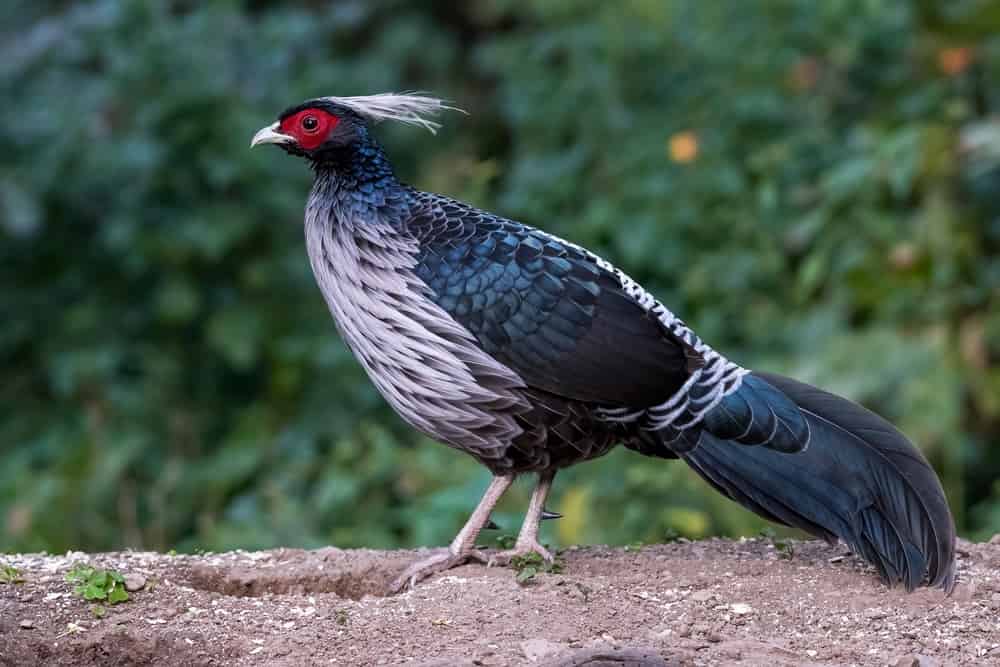
The kalij pheasant is found in forests and thickets, especially in the
Himalayan
foothills.
©Supriyo Ghoshal/Shutterstock.com
Originally from Asia, game farms brought these pheasants to Hawaii in 1962. They can be found in several national parks in forested upland areas. But some can also be found in the Kohala Mountains. Due to their rapid reproduction, the kalij pheasant was excellent as game, but they have caused more harm than good. These birds distribute seeds of invasive plants, introduce diseases to native birds, and destroy habitats through their scratching behavior.
Feral Cats

Feral cats are one of the most harmful predators in the state.
The feral cat is a variant of the common house cat. They were introduced to the islands by Europeans and quickly established wild populations on all of the main islands. While these cats look cute and harmless, they are one of the most harmful predators of native wildlife in the state. They are common and widespread, posing a significant risk to native birds and insects, including several species listed on the endangered species list. They have contributed to the extinction of over 30 species. Feral cats also spread a deadly parasite that can contaminate water sources, such as marine and freshwater. Not only does this parasite impact birds and other animals, but it can also negatively impact humans.
Mongoose
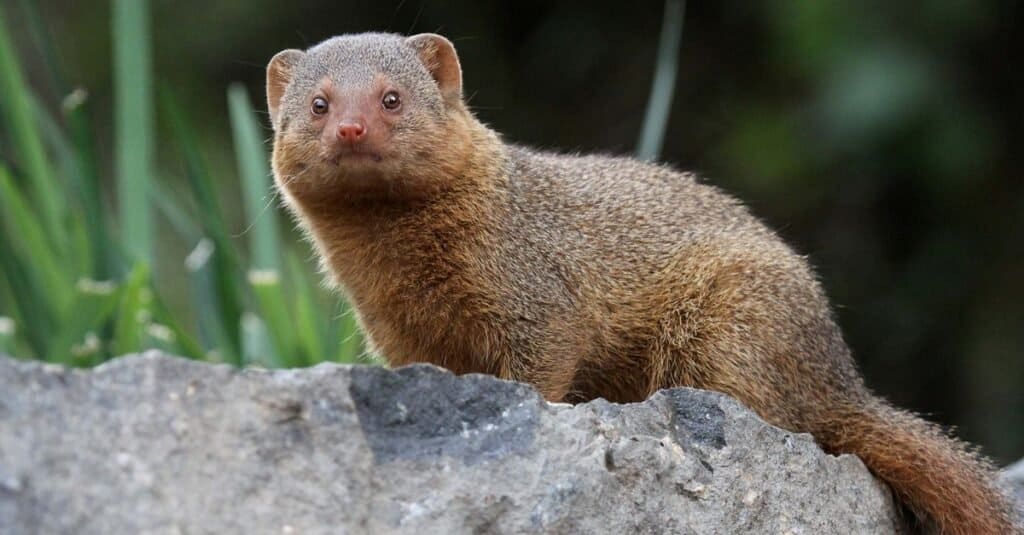
Mongooses are noted for their audacious attacks on highly venomous snakes, such as king cobras.
©steve bushman/Shutterstock.com
These weasel-like creatures are native to India but found their way to Hawaii in 1883. People from the sugar industry brought them to the islands to control the abundant rat population in the sugarcane fields. While mongooses eat many rodents, they also consume native birds, insects, and other animals. They have been known to feed on several endangered species, such as the Hawaiian crow, Hawaiian goose, and petrels. You can find these invasive species on the Big Island, Maui, O’ahu, and Moloka’i. And they live in wet and dry habitats, like gardens, forests, and grasslands.
Goat

Goats are not native to Hawaii.
©iStock.com/aurorat
While goats may not seem like they would fall under that invasive species category, they are not native to Hawaii and can cause destruction to habitats. Captain James Cook brought goats from England to the islands in 1778. While control efforts have eliminated most of their population, you can occasionally find them in coastal lowland areas. Goats have caused devastation to native plants, like koa and silverswords. But they also cause erosion in areas that they clear. This invasive species wreaked havoc on Hawaii’s environment from the late 1700s until 1916, when hunters were commissioned to reduce their numbers.
Wild Pig
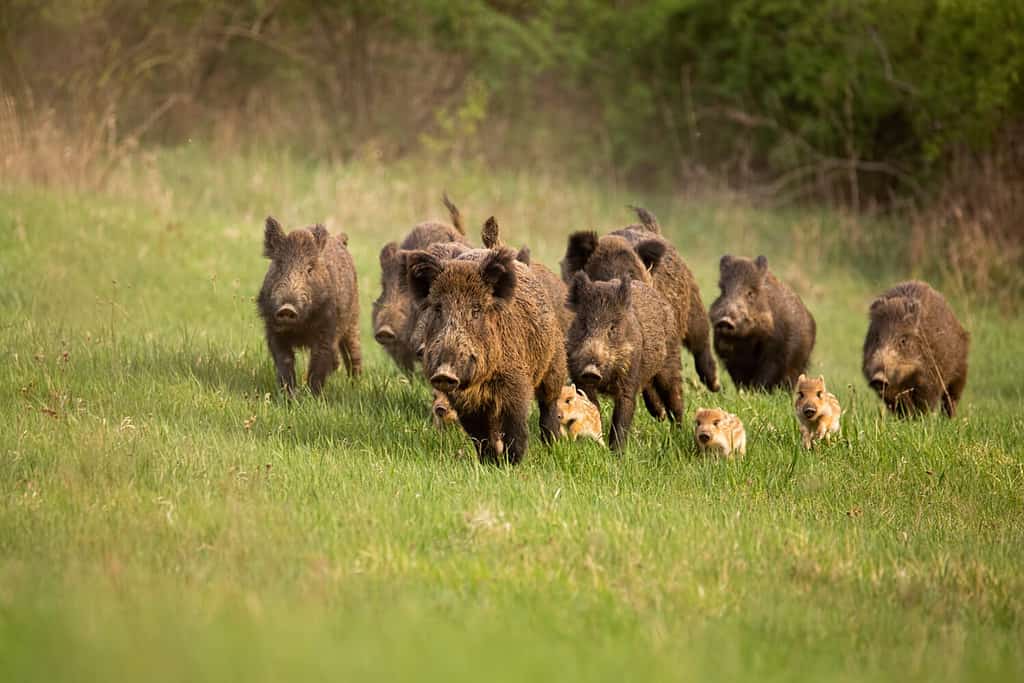
Wild pigs consume native plants and damage the environment.
©WildMedia/Shutterstock.com
Polynesian Pigs have had significance in Hawaiian culture for centuries. But when Captain Cook brought goats to the islands in 1778, he also brought European pigs, which were bigger and more aggressive. They roamed freely across the land, spreading like wildlife. Before long, these wild pigs were causing significant damage to the environment. In Hawaii, wild pigs live in wet forests, where they consume native plant species and cause havoc with their rooting. These animals can also spread diseases and create pools of standing water, attracting mosquitos, which also spread disease. While control methods have been put in place to decrease their population, these pigs are still roaming the islands.
Little Fire Ant
The little fire ant is about the size of a sesame seed and lives in trees, electrical boxes, and potted plants. They can fall on people when in trees, often stinging the neck, torso, and arms. The stings are painful and leave long-lasting welts. But they also damage crops, promote pest species, infest homes, cause blindness in animals (including pets), and cause significant economic damage. These little ants are originally from Central and South America and likely came to Hawaii via potted plants.
Nettle Caterpillar
Nettle caterpillars are the first larval stage of Asian moths. They are from Southeast Asia and first appeared in the state in 2001, likely from hitching a ride on a shipment of palm seedlings from Taiwan. They now inhabit all of the main Hawaiian islands. This stinging caterpillar is covered in poisonous spines that form rows across its body. They administer a painful sting to their victims that can cause burning, itching, and occasionally an allergic reaction. The nettle caterpillar also damages crops, as it feeds and breeds on many species. Currently, introduced Asian wasps are keeping the nettle caterpillar populations under control.
False Kava
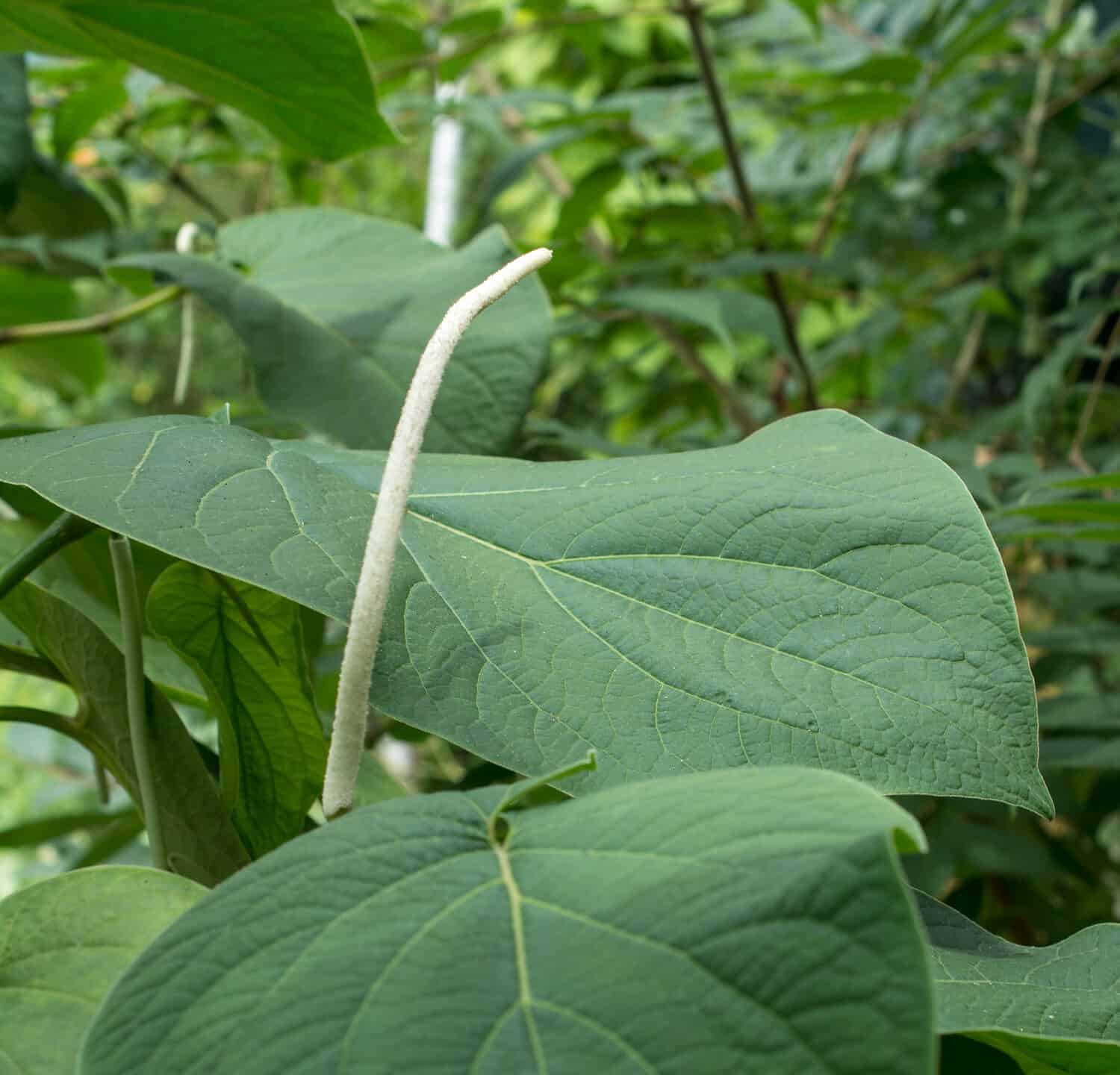
The false kava plant smells like root beer when crushed.
©COULANGES/Shutterstock.com
False kava is a 3- to 6-foot-tall shrub-like plant with bright green leaves and red-tined veins. You may recognize them by the strong root beer scent they leave when crushed. This plant is originally from Central and South America and was introduced accidentally, as it was presumed to be a different species. Currently, it is found in Maui, O’ahu, and Kaua’i. While you might think a root beer plant might be nice (or not), this species grows thick and spreads quickly, displacing native plants and taking over habitats. It is often confused with true kava, which actually has medicinal properties.
Fireweed
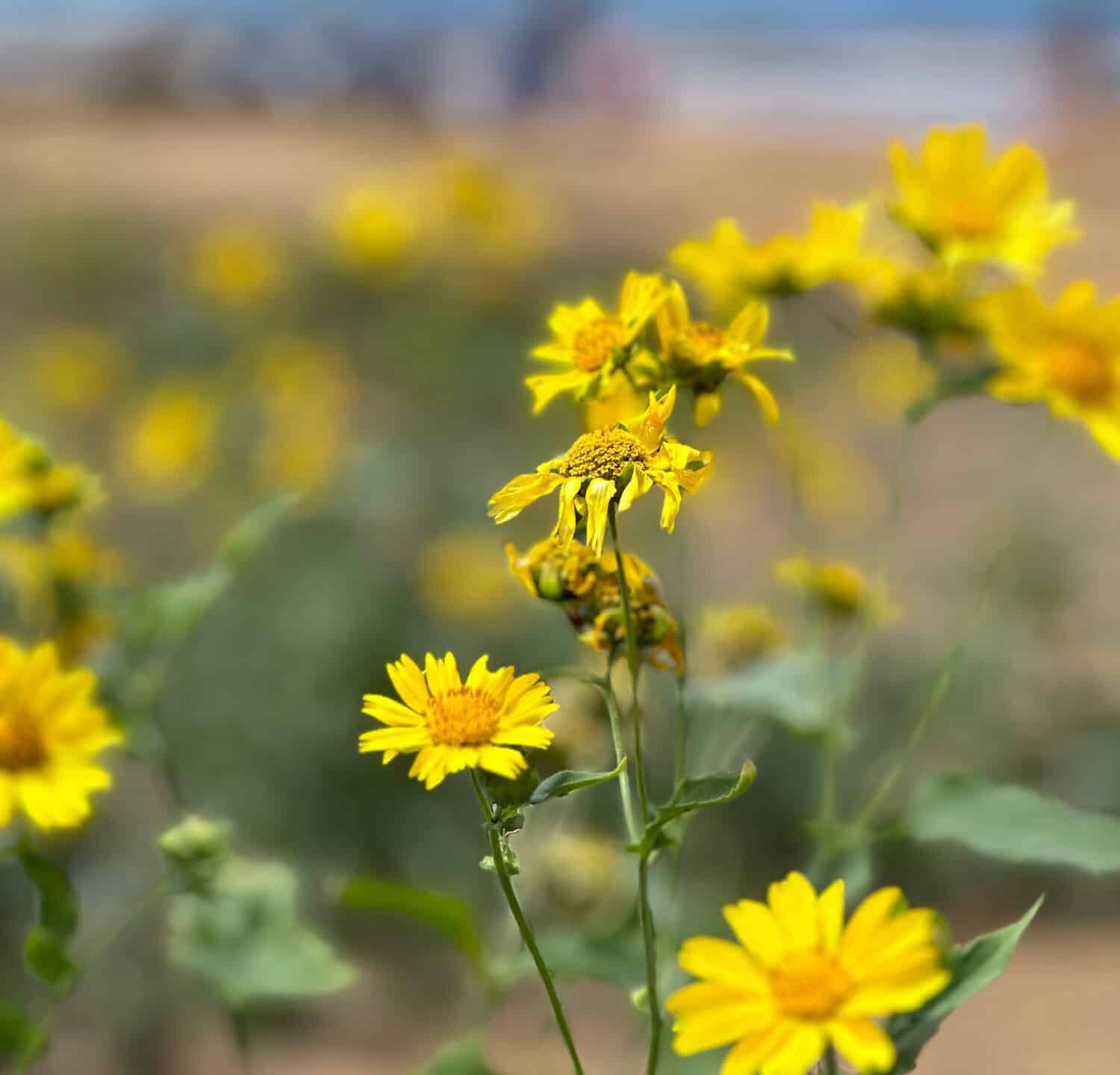
Fireweed is toxic to animals and humans if ingested
©decha thaikaew/Shutterstock.com
Native to Madagascar and South Africa, fireweed has been on the Big Island since the 1900s and is now on Maui and Lana’i. According to a member of the Outreach Team at the Oʻahu Invasive Species Committee, there were a few detection of fireweed on Oahu but have since been treated. It thrives in pastures, roadsides, and disturbed grasslands. This herb looks like a daisy and grows up to two feet high. Fireweed is toxic to livestock, like cattle and horses. It can cause severe illness, liver issues, and even death. This weed can also be toxic to humans if ingested. You should wear gloves when removing fireweed.
Barbados Gooseberry
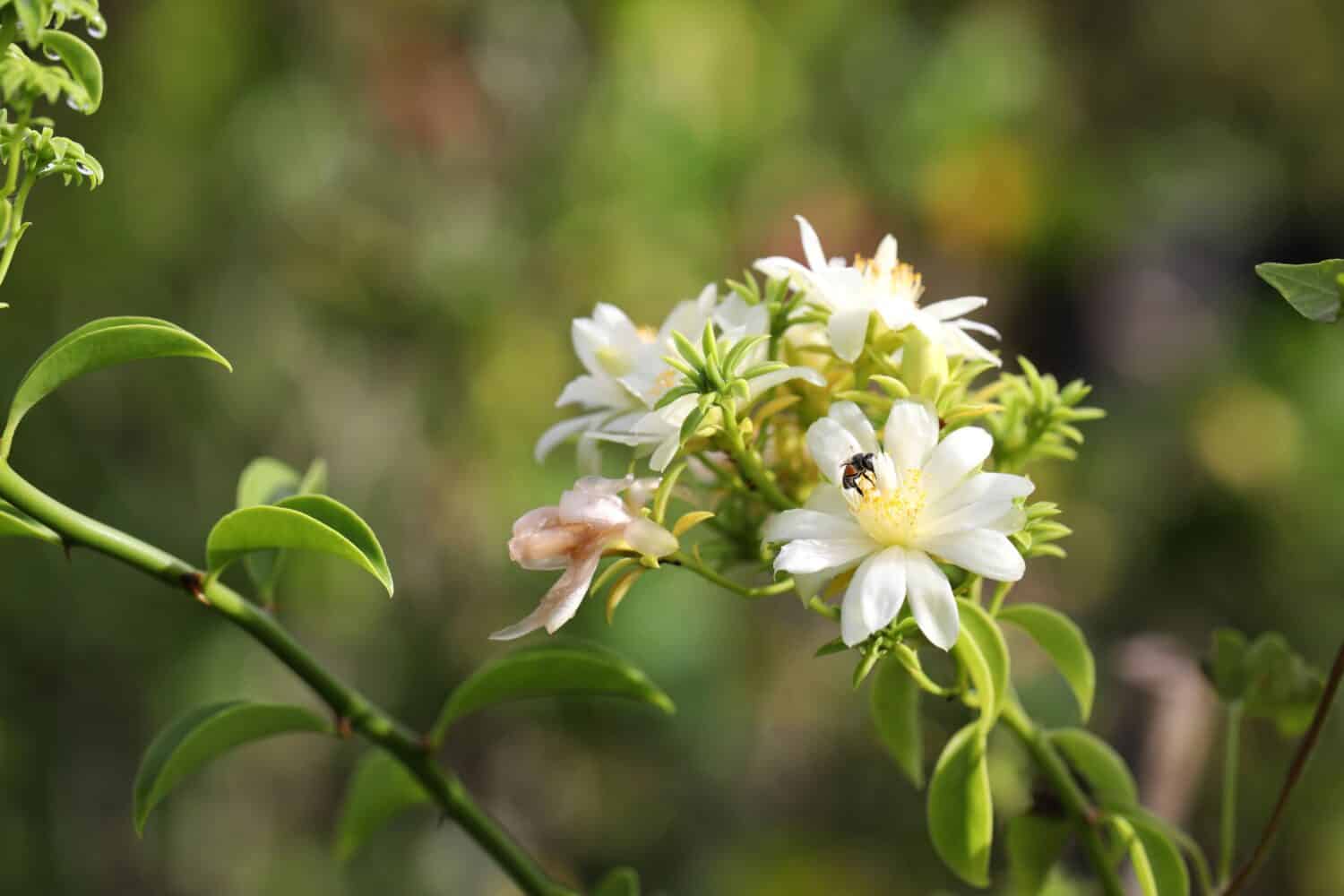
Barbados gooseberry grows in dense thickets.
©Pavaphon Supanantananont/Shutterstock.com
Beginning as a woody shrub, this invasive plant grows into a climbing cactus with leaves. It produces yellowish-red berries, and the branches can grow over 30 feet long. And while it sometimes smells sweet, it can also be repulsive. The Barbados gooseberry is native to the West Indies and South America, but it was intentionally introduced to Hawaii as an ornamental plant and source of food. It grows in dense thickets, replacing other plants and smothering trees. It also features long spikes that can be painful.
Cattail
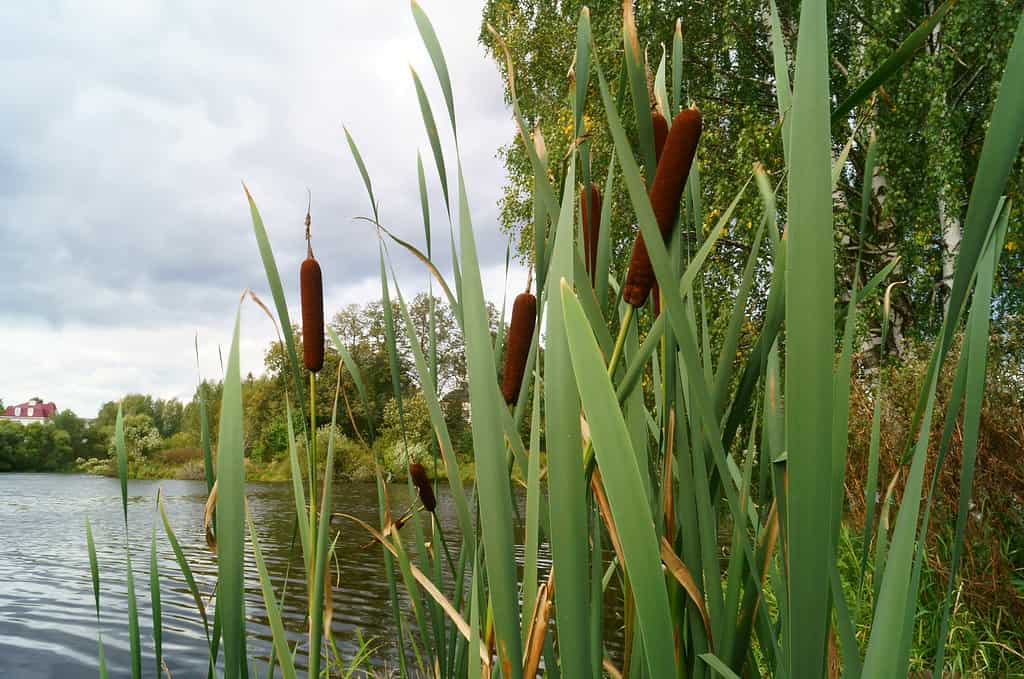
Cattail displaces endangered aquatic birds.
©Panchuali/Shutterstock.com
This wetland plant is common and native to many regions of the world, such as marshes, lakes, and near the coast. But cattails are aquatic plants that form dense mats of vegetation, taking over their wetland environments and choking out native plants. It also displaces several endangered aquatic birds and threatens taro production.
Invasive Species in Hawaii: A Recap of the Top 12
| Plant and Animal Type | Invasive Species |
|---|---|
| Amphibians | Coqui frogs |
| Birds | Kalij pheasant |
| Mammals | Feral cat, mongoose, goat, wild pig |
| Insects | Little fire ant, nettle caterpillar |
| Plants | False kava, fireweed, Barbados gooseberry, cattail |
Thank you for reading! Have some feedback for us? Contact the AZ Animals editorial team.





